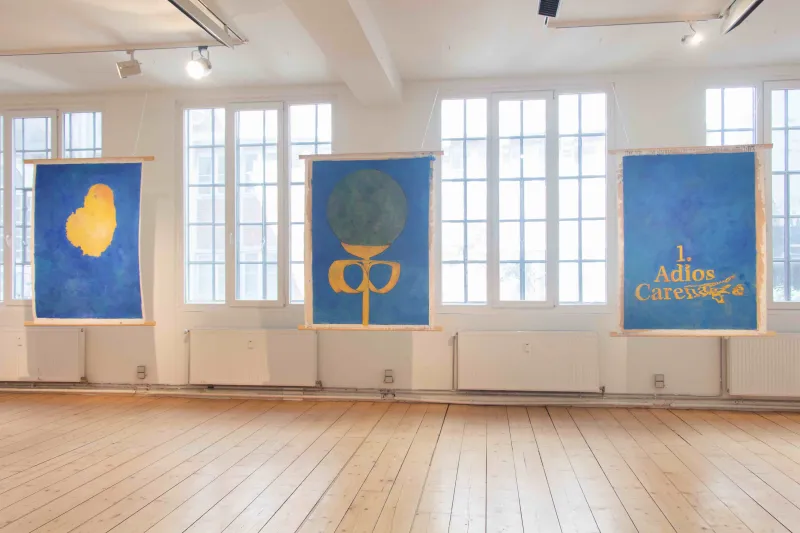Maria Concepcíon
Santa Maria Paraffina, by Felisha Maria Carenage, Luiza Furtado and Anne Meerpohl, is an interdisciplinary project that questions gender roles in maritime global intimacy. The aqueous Maria is a changeable figure who serves as the artistic alter ego of the three painters. In this way, they deal with care-work, friendship, sexual capital and memory.
The Maria Concepcíon triptych was shown at Santa Maria Paraffina, a group exhibition with Anne Meerpohl and Luiza Furtado, which was a part of Cake & Cash’s summer program at MOM, in Hamburg's Gängeviertel. To read about the exhibition, see Katrin Krumm's review at GalleryTalk.Net.
“Adios, Carenage” heralds the opening stanza of Derek Walcott’s poem The Schooner Flight. Walcott’s protagonist leaves his mistress, Maria Concepción, to sail up the archipelago. Having left his wife and children as well, he is wracked by guilt and haunted by impotence. The schooner’s deck and the sea’s depths are violent, leave him hallucinating, diving as for pearls and finding only ghosts. Seeking refuge in an island bay, harbour prostitutes’ “spiky cunts” fail him.
Has Maria Concepción’s cunt, for which he has upturned his life, been waxed? Is it overgrown, or not yet matured? Walcott’s – and my – Maria is thornless, smoothed-over and polished by desire. She is slippery, slick with longing – his and her own – and cannot grasp herself. In her hauntings, she is draped in lace, ephemeral, the moon.






